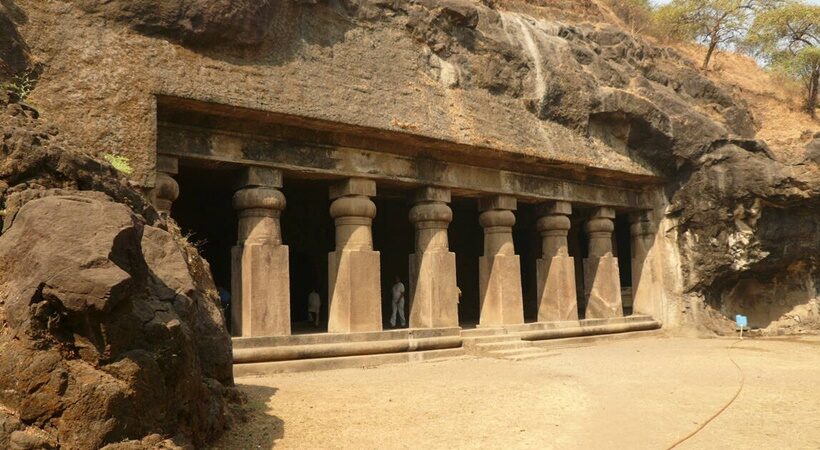Located off the coast of Mumbai, the Elephanta Caves on Elephanta Island (also known as the Island of Gharapuri) are thought to date as far back as the 5th to 8th centuries, although their origins remain mysterious. The small island is dotted with numerous ancient archaeological remains that are the sole testimonies to its rich cultural past. These archaeological remains reveal evidence of occupation from as early as the 2nd century BC. The rock-cut Elephanta Caves were constructed about the mid-5th to 6th centuries AD. There are seven caves carved from the rocky basalt hillside, including both Buddhist and Hindu sculptures, mostly in high relief.
The larger group of five caves feature Hindu imagery, while a smaller group of caves on the eastern side of the island happen to be Buddhist. Originally painted, the now plain stone has survived the centuries a bit worse for wear but extraordinary nonetheless. An important part of Indian architectural tradition, there are more than 1500 rock-cut structures in India—more than anywhere else in the world. The caves at Elephanta are a small portion of extraordinary rock architecture in the country, such as the rock-hewn temples at the Ellora and Ajanta complexes.

The 7-metre-high masterpiece “Sadashiva” dominates the entrance to Cave 1. The sculpture represents three aspects of Shiva: the Creator, the Preserver, and the Destroyer identified, respectively, with Aghora or Bhairava (left half), Taptapurusha or Mahadeva (central full face), and Vamadeva or Uma (right half).
The island was ceded to the Portuguese by the kings of Ahmadabad in the 16th century. Since then, the caves ceased to be a place of worship, and the caves and sculptures were damaged by Portuguese soldiers. Elephanta Caves were restored in 1970, and are now a UNESCO World Heritage Site. There are still concerns about the future of the caves, suffering from the elements and ravages of time as well as pressures of tourism and a growing population on the island. The elephant carving originally standing guard on the island is now on display at Bhau Daji Lad Museum in Mumbai.



















